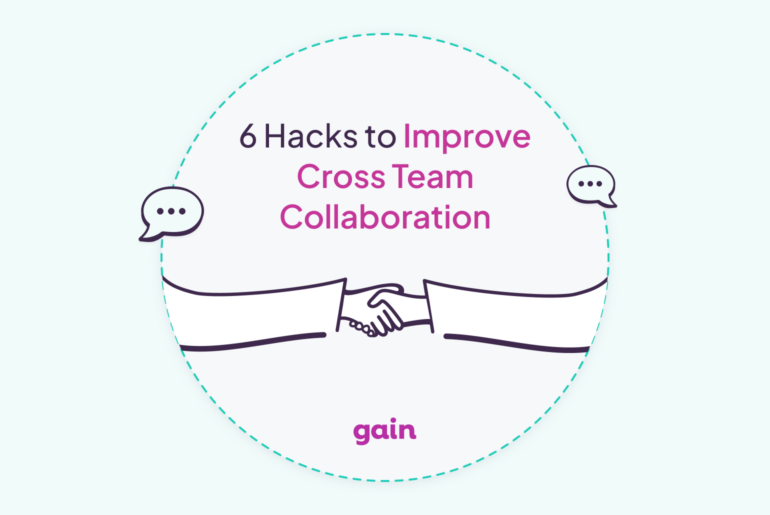Photo by Ferenc Horvath on Unsplash
Not all team members pump out work at the same rate. There are some on the team who turn over projects fast; others, the so-called “slow workers,” lag behind. And then, sometimes there is someone on the team who is very slow…too slow.
This can be a delicate situation because you don’t want to put more pressure on this person and cause even more delays. However, it’s a situation that should be dealt with in order to keep up productivity.
In this blog, we explore potential reasons for slow employee performance and the most effective strategies for managing a slow worker on the team.
Let’s get to it.
Potential Reasons for Slow Worker Performance
The term “slow worker” describes an employee who operates at a pace that differs from the average but carries no negative implications. It’s essential to recognize that every worker brings unique strengths and contributions, irrespective of their working speed.
Interestingly enough, even individuals typically regarded as “fast workers” can experience periods of slowdown without any apparent reason. Or perhaps there is a reason behind it?
Let’s explore four possible factors that could contribute to an employee’s reduced performance.
1. Lack of Clarity in Job Responsibilities and Expectations
Job clarity is key when it comes to work pace. Without clear job responsibilities, employees are left in a haze of uncertainty, unsure of what they should be doing or what goals they need to achieve.
This confusion leads to wasted time as they constantly seek clarification or make guesses about what they’re supposed to do. Without a clear understanding of their role, they struggle to prioritize tasks and make confident decisions, which ends up causing delays and a slower work pace.
And on top of that, not knowing their responsibilities can make them feel lost and unsure about their contribution to the company, which really takes a toll on their motivation and engagement.
2. Inefficient Processes and Workflow Bottlenecks
Complex workflows and bottlenecks in processes can hinder productivity. Facts.
43% of knowledge workers report that they spend too much time switching between different work tools, which ultimately slows them down.
Consider implementing tools and software solutions like Gain to streamline content approval and social media workflows. Automation can greatly reduce manual tasks, freeing up time for slow workers to focus on more value-added activities. By identifying and eliminating inefficiencies, you can help boost the overall productivity of the team.
3. Skill Gaps or Inadequate Training
Sometimes, when performance is slow, it can be because of a lack of skills or insufficient training.
For instance, according to a study conducted by Deloitte, 31% of organizations identified the lack of skills in using artificial intelligence as a significant concern. This lack of skills can create gaps within an organization as technology and its applications continue to evolve.
Related: How to Leverage AI in Social Media Like a Pro in 2023
Therefore, it is important to evaluate whether providing additional training or upskilling opportunities would benefit the underperforming employee and enhance their efficiency in completing tasks. After all, investing in the development of your employees ultimately contributes to the overall success of your team.
4. Motivational Factors and Engagement Levels
When employees experience low motivation and disengagement, it can have a notable impact on their productivity. Slow workers might find it challenging to muster the enthusiasm or see the purpose in their work, leading to reduced output.
According to Forbes, motivated employees exert more effort and are likely to work faster. Therefore, it’s absolutely crucial to understand what motivates slow employees.
Once you know what makes them tick, you can then go on and create a supportive work environment where they’ll be inspired to reach their full potential.
Proven Tips for Managing a Slow Worker on the Team
1. Don’t Just Give More Work to Faster Workers

It would probably be easier just to give faster workers more tasks so that everything gets done. It’s crucial to balance your team’s workload fairly, or top performers will burn out. Though this is an uncomfortable situation, managing a team means tackling issues like this head-on.
2. Tell the Team Member the Problem and Listen to Their Feedback

The first step is to tell the employee that he or she is working slowly. You can explain to them that Project X should take two hours and Project Y should only take thirty minutes and explain how long they took. Of course, this should not be done condescendingly, just in matter-of-fact reporting.
Then, listen to their feedback. Perhaps the employee struggles because of a noisy office. Or, maybe they did not have the right tools to complete the project. It’s important to hear feedback because all of that will go into finding a solution.
3. Create a Set of Solutions Together

This employee may need a bit more micromanaging, just at first. Depending on his or her response, create solutions to fix problems. For example, if there are too many distractions, use a tool to help.
Try a platform such as RescueTime or HeyFocus that can help the employee focus better. Offer a few different platforms to try since he or she may prefer one over another.
You can also try creating more of a set schedule for that person. Instead of saying, Project X is due on Friday, tell them to work on it for one hour each day, and they will have it done by Friday.
Alternatively, mark specific times to work on each project on their calendar. Talk with the team member to see which solutions they want to try. Don’t be discouraged if some of them don’t work; there is a bit of trial and error when it comes to finding the right solution.
4. Give Them More They Like

Talk to the employee about what projects he or she likes. Productivity might increase when working on an exciting project. Or, try to narrow down a skill set. For example, if the employee is an excellent writer, then give that person more writing tasks and try to offload other projects.
5. Set a Clear Schedule with Deadlines

Make it clear that something should take a certain amount of time, and that it needs to be done by a certain date. A clear, defined deadline may help make the person work faster. Especially when coupled with productivity tools, this tactic could get projects done quickly.
6. Work Side by Side on a Project

If none of these tactics work, try working side by side with the team member on a project. Choose a task that should take one hour or so and work next to the person to complete it together.
If working remotely, have that person share their screen (and maybe choose a shorter project), and go step by step until the project is complete. Doing this, you may get a sense of why certain things take them longer than they should.
Alternatively, choose a project and show the person step by step how to do it and how long it should take.
Conclusion
Improving the performance of a slow worker requires patience and focused effort, but it is definitely achievable. While some managers prefer to assign projects to more efficient team members, it is crucial to support and develop every member of the team to ensure overall high productivity.
Additionally, it’s worth considering whether the slow pace is due to the absence of automated processes. Therefore, it would be beneficial to explore the option of investing in automation tools.
If your team’s productivity is being hindered by bottlenecks in social media content creation, scheduling, and content approvals, we recommend giving a try to our social media management tool Gain.
Grab a free 14-day trial today.






